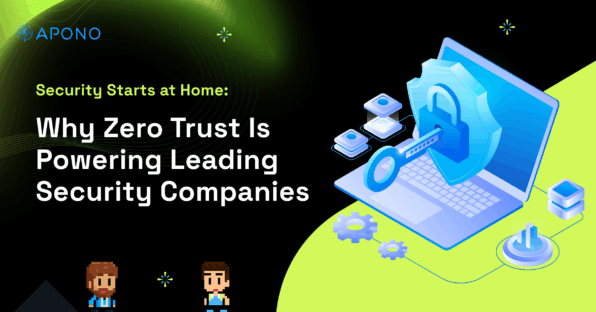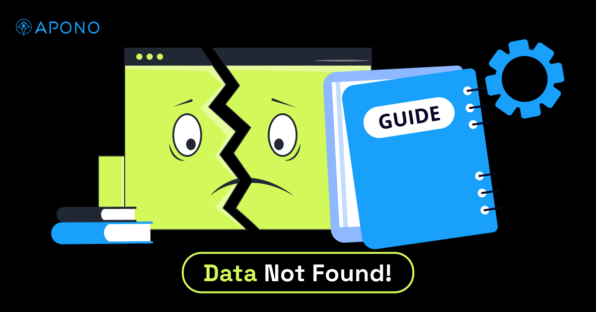What is Enterprise Identity Management?

The Apono Team
July 31, 2025

By 2025, non-human identities (like service accounts, API keys, and bots) will outnumber human identities by 45:1 in cloud environments. Yet many organizations still rely on static IAM roles and manual provisioning, leaving them exposed to credential sprawl, insider risk, and compliance violations.
That’s where modern Enterprise Identity Management (EIM) comes in.
Enterprise software development is increasingly cloud native. However, managing identities across large companies and complex infrastructure has been left behind, and it is far from catching up.
Beyond human identities (such as developers, administrators, and engineers), these systems communicate via non-human identities (NHIs), including service accounts, API keys, certificates, and secrets.
Managing NHIs is vastly different from managing human identities. According to ERP today, 28% of enterprises say that managing non-human identities is their top security priority for 2025. This statistic highlights that enterprise environments are becoming increasingly more automated, and enterprise identity management (EIM) solutions must keep up.
Jump to…
How to Define Enterprise Identity Management
Why Enterprise Identity Management is Beneficial for Security
3 Core Functions of Enterprise Identity Management
Major Challenges of Enterprise Identity Management Implementation and How to Solve Them
The Future of EIM Is Automated, Scalable, and Secure
How to Define Enterprise Identity Management
Enterprise identity management (EIM) is an organizational framework that comprises policies, processes, and technologies for managing digital identities and controlling access to resources. In this case, management involves creating, verifying, storing, and using identities.
These digital identities can be human (such as your organization’s staff or customers) or non-human. Non-human identities refer to identities that access systems without requiring direct human intervention. For example, a Kubernetes cluster can use a service account to authenticate with your private container registry. NHIs don’t use interactive logins like humans. Instead, they authenticate using programmatic credentials such as API keys, tokens, or certificates.
As your organization scales, so does the number of human and non-human identities, often into the thousands. This challenge means an increased attack surface and a hit to cloud-native security, which requires the implementation of robust enterprise identity management to remediate.
Why Enterprise Identity Management is Beneficial for Security
EIM is a cornerstone of modern security architecture, and there are three main reasons why.
1. It Reduces the Attack Surface
As mentioned earlier, digital identities can easily grow into thousands. When it comes to human identities, such as those of your employees or customers, access is generally tied to the person’s role and responsibilities, making it more straightforward to track and control.
NHIs, on the other hand, present a unique set of challenges for lifecycle management. Without EIM, they are easy to overlook, difficult to monitor, and often over-permissioned. Many of them hold long-lasting access that no one remembers to review until a breach happens, leading to a loss of revenue or data.
2. It Simplifies the Development Experience
When your engineers understand what they need and how to use access within the predefined guardrails, the speed they build increases, with fewer pitfalls. For example, EIM features like Single Sign-On (SSO) mean engineers only need one set of credentials to access multiple applications, reducing password fatigue and the likelihood of users resorting to weak or reused passwords. SSO also centralizes authentication and reduces the number of credentials users must manage.
Features like automatic key rotation also ensure that non-human identities, such as API keys or service account tokens, are regularly updated without manual intervention, significantly reducing the risk of a breach if a key is ever compromised.
3. It Improves Compliance and Auditability
Compliance regulations, such as GDPR and HIPAA, often require strict controls over who can access sensitive data. An EIM provides the necessary framework and tools to enforce these controls consistently across your organization.
3 Core Functions of Enterprise Identity Management
EIM isn’t just about logging an identity (user) in or out; it’s about controlling who/what has access to what, when, and how. Below are three core functions that make up a strong EIM framework, each playing a critical role in securing and simplifying identity management across your organization.
1. User Provisioning and Deprovisioning
User provisioning refers to the creation of an identity. In contrast, deprovisioning refers to the destruction or removal of an identity.
There are different ways to create an identity. For example, in the cloud-native world, there are various ways to create a Kubernetes service account.
- Using kubectl create serviceaccount (CLI Command)
- Using a YAML manifest with kubectl apply (Declarative)
- Using the Kubernetes API Directly
- Using Infrastructure as Code (IaC) Tools (e.g., Terraform), etc.
Now, imagine that in a team of ten engineers, three use the CLI route, and the remaining seven use one of the other methods. This complexity will easily lead to chaos at scale. EIM processes standardize the creation and deletion of identities, making scaling and maintenance seamless.
2. Access Control (Authentication & Authorization Mechanisms)
After creating an identity, the next questions to answer are:
- How do you verify (authenticate) that identity?
- What can that identity do (authorization)?
These two pillars—authentication and authorization—are the bedrock of secure access control, ensuring that only the right people (or non-human identities) can access the right resources at the right time for the right reasons.
With an EIM system, managing access becomes seamless, allowing for the enforcement of more secure practices, such as multi-factor authentication (MFA) and RBAC (Role-Based Access Control).
Modern EIM solutions support a variety of authentication protocols to unify identity management across systems. For human users, this typically includes OAuth2, SAML, and OpenID Connect, enabling integration with identity providers like Okta or Azure AD. For non-human identities, authentication often relies on mutual TLS, API tokens, or federated cloud-native mechanisms, such as AWS IAM roles for Kubernetes service accounts.
3. Monitoring and Auditing
An enterprise identity management system logs every activity across your organization’s authentication and authorization mechanisms. This pillar helps demonstrate compliance during audits and provides crucial forensic data in the event of a security incident. It enables you to trace unauthorized access (including insider threats), understand the scope of a breach, and resolve it effectively.
Major Challenges of Enterprise Identity Management Implementation and How to Solve Them
Implementing enterprise identity management is rarely a plug-and-play process. You’ll face real obstacles, from integrating legacy systems to user resistance, which can stall or even derail EIM projects. But with the right strategies, you can overcome these roadblocks.
Table 1: EIM Challenges and How to Solve Them
| Challenge | Solution |
| Access control & PoLP | Granular, context-aware access using Policy-as-Code. |
| Identity lifecycle management | Automation for machine identities, including credential rotation. |
| Provisioning & deprovisioning | Just-In-Time access with automatic revocation. |
| Governance, compliance & auditing | Comprehensive audit logs and automated reporting. |
| Scalability & developer experience | Seamless integration across the tech stack. |
Access Control & Least Privilege
At the heart of access control is the principle of least privilege (PoLP), which grants individuals, applications, or services only the minimum necessary permissions to perform their specific tasks and no more.
With traditional enterprise identity management, RBAC is mostly used to implement PoLP. While foundational, RBAC alone often struggles with granularity, particularly in complex cloud-native environments. Therefore, it is often extended with Policy-as-Code frameworks like OPA to support more granular, context-aware access.
Identity Lifecycle Management
While many non-human identities are meant to be short-lived, in practice, they often persist long after their purpose has ended, leading to security risks like credential sprawl and orphaned access. Traditional EIM often lacks visibility into rapidly created, short-lived identities like service accounts, CI/CD bots, or API keys. These identities are not in use but still hold valid permissions.
The result? High risk of security breach. Your EIM tool should provide lifecycle automation for machine identities, including credential rotation, access discovery, and auto-expiry. Automated EIM systems rotate credentials at predefined intervals or on-demand. Some platforms also rotate credentials upon every deployment or whenever usage patterns change, reducing the exposure window if a credential is compromised. This best practice helps reduce credential sprawl and orphaned identities.
Provisioning & Deprovisioning
Many organizations still implement identity management using regular project management tools like Trello and Jira. This approach may sound clunky—and it is.
Managing identities using regular project management tools often relies on static role assignments and manual provisioning, which can lead to standing privileges and human error. For example, an engineer who left a company still had the organization’s GitHub repo access two months later. The engineer could have easily set up a backdoor or copied proprietary code.
It is essential to automate identity provisioning and deprovisioning to avoid issues like this. For example, with Just-In-Time (JIT) access flows, access is granted only when needed and automatically revoked after a defined time, eliminating standing privileges and reducing the attack surface.
Governance, Compliance & Auditing
Traditional EIM generates audit logs but may not be real-time or actionable. Modern EIM automation tools offer comprehensive audit logs and automated reporting, showing who accessed what, when, and why. They also allow you to define your log level so you can sieve out verbose logs and save on cost. Governance and auditing support results in compliance with frameworks like SOC 2, HIPAA, and GDPR.
Scalability & Developer Experience
As mentioned earlier, traditional EIM can easily become a bottleneck if ticket-based access requests and admin intervention are required. The way forward? Self service. On-demand, self-serve access via Slack, Teams, or CLI empowers developers and accelerates workflows without compromising security.
To be effective, an EIM system must integrate seamlessly across the tech stack. For example, it must manage IAM roles and policies in cloud platforms like AWS, GCP, and Azure and govern access to SaaS tools such as GitLab, Snowflake, Jira, or Confluent.
From the developer’s viewpoint, self-serve access control dramatically improves experience and efficiency. Devs can request elevated privileges via a streamlined portal, get automatic approvals based on policies and context, and begin work immediately without any tickets or delays.
You can implement self-serve access control using cloud-native access management platforms—access is revoked automatically once the task is done. JIT self-serve access removes friction from typical developer workflows and eliminates the frustration of waiting on manual processes.
The Future of EIM Is Automated, Scalable, and Secure
Enterprise identity management is evolving, and for good reason. Traditional models relying on static roles and manual provisioning are too rigid and risky for today’s environments. Modern identity management demands automation and scalability, especially as teams grow and workloads shift.
Apono modernizes your existing EIM stack by automating access lifecycle management, especially for non-human identities like service accounts and pipelines. It enforces least privilege by eliminating standing permissions, supports zero trust architectures, and simplifies access control for high-velocity DevOps teams.
From granting time-limited production access during incidents to restricting CI/CD permissions to only what’s needed during deployment, Apono makes secure access seamless.Ready to eliminate standing access without slowing your team down? Book your personalized Apono demo and see how to modernize enterprise identity management the smart way.






